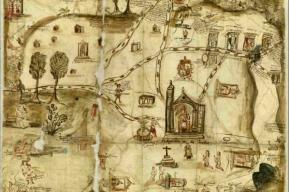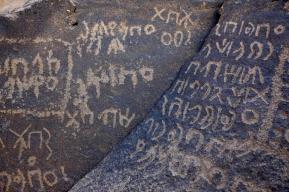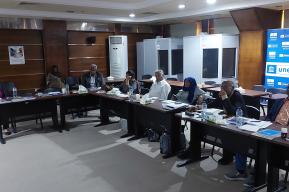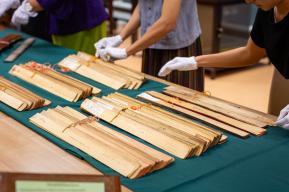I would spend hours climbing the towering dunes that loomed over the valley, marveling at the sheer size and grandeur of the natural formations. I grew up commonly seeing these inscriptions, I wondered about the people who had created them, and what messages they were trying to convey, but I never truly understood what they were or why they were there.
Alenaize muses, adding how, beyond AlUla’s natural terrain, he was also intrigued by the countless rock inscriptions that dotted the landscape, ancient symbols etched into the stone that he had seen since he was a child.
During an excursion in which he was guiding a researcher from the field, Alenaize began to better understand their historical significance, and decided to document the ancient inscriptions. He formed a team consisting of family members and assisted the Royal Commission for AlUla (RCU) in documenting the inscriptions sites scattered throughout the area.
Memory of the World preservation
The documentary heritage across AlUla is now being preserved and made accessible for all through UNESCO’s Memory of the World (MoW) Programme in partnership with RCU. For three years, Alenaize and his team worked tirelessly to identify and document over 50,000 inscriptions in AlUla. With the guidance of RCU, they identified inscriptions, categorized them, measured their dimensions, assessed their quality, and marked their coordinates. Many sites have been protected to enable further analysis and study.
One such AlUla site contains the Inscription of Zuhair, which was Saudi Arabia’s first item of documentary heritage on the MoW International Register, while AlUla’s Jabal Ikmah—which represents the largest concentration of well-preserved Dadanitic inscriptions in the world—was added in May 2023.
The MoW project to preserve documentary heritage in AlUla is facilitating the revival of AlUla as a cultural hub. With the aim of achieving universal accessibility, UNESCO has created a dedicated online platform and launched a monthly newsletter covering the region’s documentary heritage. Capacity-building workshops are being prepared to support the Arab world’s memory institutions, while a flagship Kingdoms Institute (KI) Conference will aim to further enhance stakeholder capacity to identify, preserve, and enable access to the region’s documentary heritage.
Understanding past civilizations
In a 57-day expedition to a 52-kilometer site, Alenaize describes the location as “a treasure trove of inscriptions, with over 15,400 recorded in total. We found inscriptions in Thamudic, Nabataean, Islamic, and Arabic modern scripts, among others. There is also striking rock art, including shapes of camels, horses, ostriches, dogs, lions, oryxes, gazelles, leopards, and more.”
Alenaize and his team remain committed to discovering new rock art and inscriptions. “At the end of our expeditions,” he concludes, “my family and I feel a sense of pride and accomplishment. We are contributing to the understanding of civilizations in the region.”
Their commitment embodies the spirit of the MoW Programme, which upholds communities’ custodianship of heritage while celebrating the accomplishments of intercultural dialogue, for future generations to see the region’s history in a new light.
















